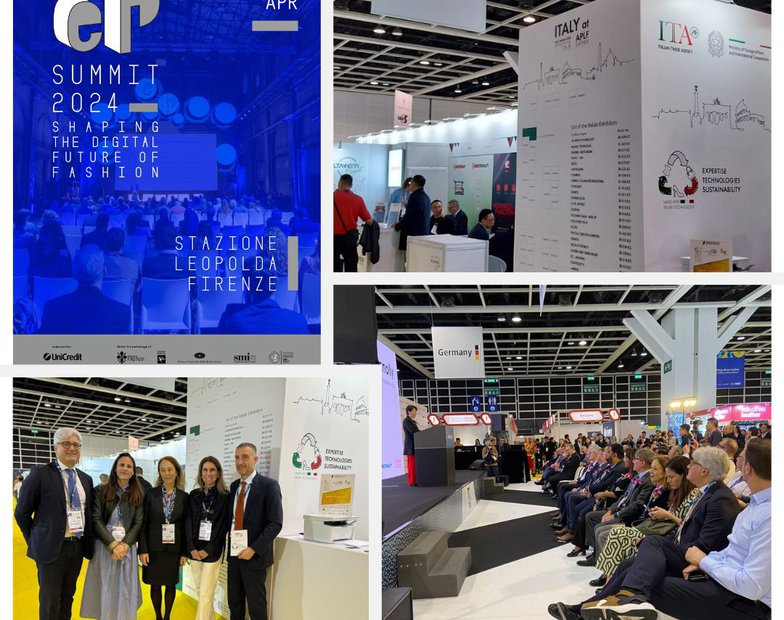The scales tipped in new directions across the supply chain in 2022 as market dynamics shifted in response to the pullback in consumer spending on goods, inflation and, now, concerns of a recession. [Supply Chain 2022: From Scarcity to Surplus - Sourcing Journal]
“We broke the system this year and there was a significant amount of investment done by all groups to weather that,” said Paul Brashier, vice president of drayage and intermodal at third-party logistics provider ITS Logistics. “And from that chaos, hopefully we’ll rise like a phoenix here and be in a better position to not just avoid situations like this in the future, but also be able to handle more volume and volatility as it becomes part of our supply chain.”
The tumult of the past two years may have forced the start of a paradigm shift within logistics, but only time will tell if those lessons will bear out in staying power.
“I think we learned about the resilience of people in the industry, about the ability to adapt and also how quickly we had to adapt to not only working from home, but because the industry, as a whole, is a necessary business, many people still had to come into the warehouse and the office to move freight,” said Vaughn Moore, executive chair and CEO of freight forwarder AIT Worldwide Logistics. “It gets forgotten sometimes how important logistics is to the economy.”
The continued supply chain and transportation headlines this past year only further helped solidify the apparel and footwear industry’s importance to the average consumer, begging the question of what longer-term implications
“For the first time in history, we had a massive thought process [among consumers] thinking about ‘Where’s my product coming from’ and that’s because we’re in a society where immediate gratification is first and foremost,” Moore said. “When you couldn’t get something at your fingertips tomorrow or today, that really threw people for a loop and they really got a taste for what the world would be without logistics. And they didn’t like it.”
Now as the world faces a global economic downturn, one truth remains for the transportation industry, Moore said: “logistics still has to move things from Point A to Point B.”
The industry will do so amid a new set of market conditions that crept forward in 2022 and will dictate operations in the coming year.
Falling Rates
Transportation rates dominated the headlines at the start of the year, leaving many to wonder how long prices would remain so elevated. Rates remain in the headlines as the year comes to a close, but not for the same reasons.
“The ocean carriers certainly did not see it and the logistics world didn’t that in this year we would see such a quick snapback in pricing to come back in ocean, air and trucking,” Moore said. “That’s been really surprising to see just how quickly it stayed here and it’s going to stay. There’s going to be some fluctuating, but not much.”
While carriers’ record profits were the story earlier in the year, they’re no longer in the same position as 2022 comes to a close.
“Once supply and demand move out of equilibrium, particularly on the short-term rating, we see quite a fall,” Jeremy Nixon, CEO of Singapore-based carrier Ocean Network Express (ONE), said during a media briefing for the Port of Los Angeles this month. “So, in the same way when demand exceeds supply, spot rates go very quick because we can’t get the supply side back in quick enough. Sure enough, over the last six to eight weeks, demand has fallen faster than the supply side could be adjusted. So, in the spot market, not the contract market,…we have seen a significant drop down.”
Nixon went on to say in more recent weeks, the spot market is beginning to see a bottoming out.
In the meantime, blank sailings, or a ship that’s removed from service, are now on the rise in response to the pullback in imports and falling rates. For ONE, that’s meant blanking about 20 percent of its services in response to a softening it began seeing in October.
The new reality is greater reliability when it comes to transportation, a definite plus from a shipper’s perspective.
“We’re seeing record numbers in December of blank sailings from carriers because there’s simply not enough volume to justify deploying all their ships…. From the logistics standpoint, this is a big part of what’s explained faster transit times,” said Ryan Petersen, founder and co-CEO of digital freight forwarder Flexport. “The ability to get space, it’s no longer an auction to get your container on to a ship. You can pretty much find capacity.”
Rent Growth
Another cost consideration for companies in 2022? Industrial rents.
U.S. rent growth this year is expected to exceed 30 percent and top 25 percent worldwide, according to industrial real estate owner and developer Prologis.
The expectation for this year bucks the firm’s initial forecast going into 2022 that expected U.S. rents to see a cooling off of growth and notch only a 10 percent gain.
Clearly, that forecast missed the mark as space remained in high demand.
Vacancy, the measure of available space, was 3.3 percent at the end of the third quarter and an “all-time low,” according to real estate brokerage firm JLL.
The quarter ended with industrial rents averaging $8.45 per square foot, which was up 25 percent from a year ago, according to the firm. The Cincinnati/Dayton market in Ohio saw the largest spike in rents, up 66.9 percent from the previous quarter, JLL said.
Savannah, with a 0.5 percent vacancy rate at the end of the quarter, reflected the tightest market for industrial real estate, followed by the Inland Empire (0.6 percent), Los Angeles (0.8 percent), New Jersey (1.1 percent) and Orange County (1.3 percent).
As logistics professionals learned to manage and wade their way through a new set of real estate realities, one interesting idea emerged at the end of the year: the sharing of property.
JLL and American Eagle Outfitters Inc.’s Quiet Platforms said in December they would work on the concept of a percentage rent leasing model for industrial real estate.
The partnership would entail Quiet leasing out excess capacity in its own buildings to other retailers, using a model that takes a percentage of revenue. The company is also pooling other brands’ warehouse facilities with the same rent-as-a-percentage-of-revenue model to create a marketplace of available industrial capacity.
The model removes the fixed cost nature of traditional leases in favor of flexibility for peak and non-peak operating times.
“You always hear in the market people are either shedding more capacity or there is not enough capacity because the unit of capacity today is a distribution center,” explained Shekar Natarajan, AEO executive vice president and chief supply chain officer and Quiet Platforms president. “So, what we are trying to do is break that unit of measure of a facility, a distribution center, into smaller blocks that are available.”
In a way, it’s similar to how Uber broke the unit of measure from a whole car to a seat within a car and sold that off to people in a pay-as-you-go model, Natarajan said.
The Inventory Glut
Demand for available industrial space continues, particularly with the amount of excess product now in businesses’ hands and the increasing demands that come with e-commerce in the way of faster delivery speeds.
Retailers that sought to ensure they had inventory on hand at the start of this year, now find themselves sitting on too much as businesses end 2022 with warehouses overflowing and not enough consumer interest.
“I think the thing that’s been most interesting from a logistics standpoint is the adjustment went from just-in-time logistics to just in case. You’re looking around the world now where warehouses are full of product. Going into [2022] or the previous one, that just wasn’t the case,” Moore said.
Companies were able to achieve product availability eventually during the pandemic, but were not able to react as quickly to the tightening on the consumer side this year.
“There are a lot of warehouses sitting on the wrong type of inventory,” Moore said.
So, how quick does the industry see retailers clearing out the glut?
“Quickly is not the right word. I think it’s going to be a flushing out that’s going to last into the first half of next year,” Moore said. “In some cases, these retailers will not be able to get the product they need until next year.”
Some say it also depends on how holiday sales end up shaking out in the remaining days of the year.
“Looking down the line, we also see maybe some normality coming back into play in Q2 and beyond if we can flush out a lot of this inventory at the retail level here in the U.S. and push it through during these holiday season sales,” the Port of Los Angeles’s executive director Gene Seroka noted in a media briefing this month.



